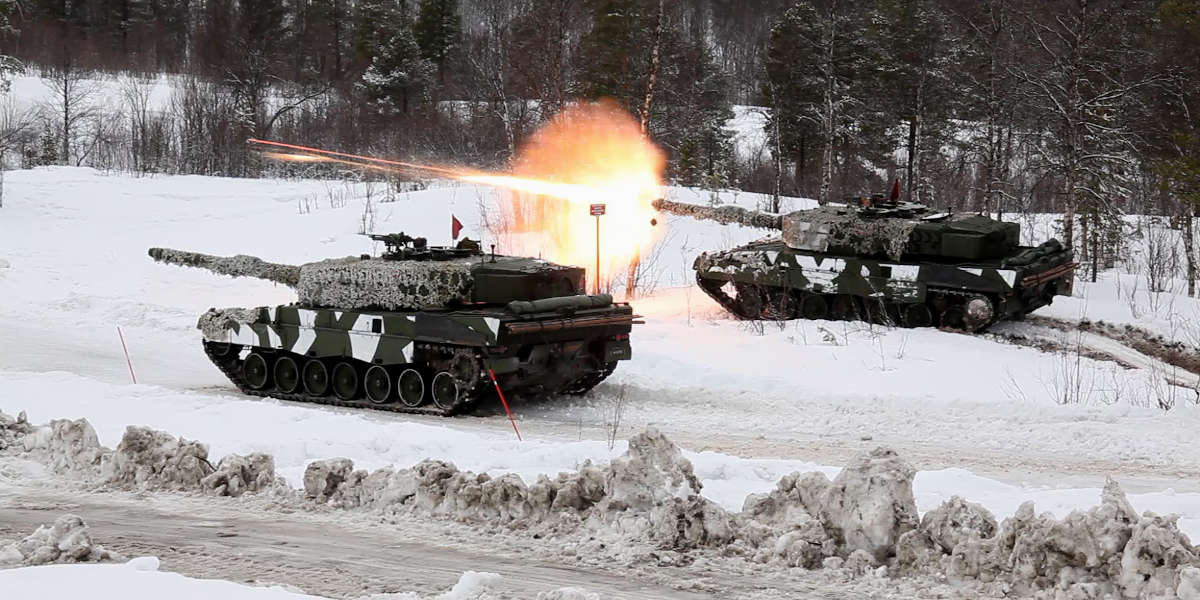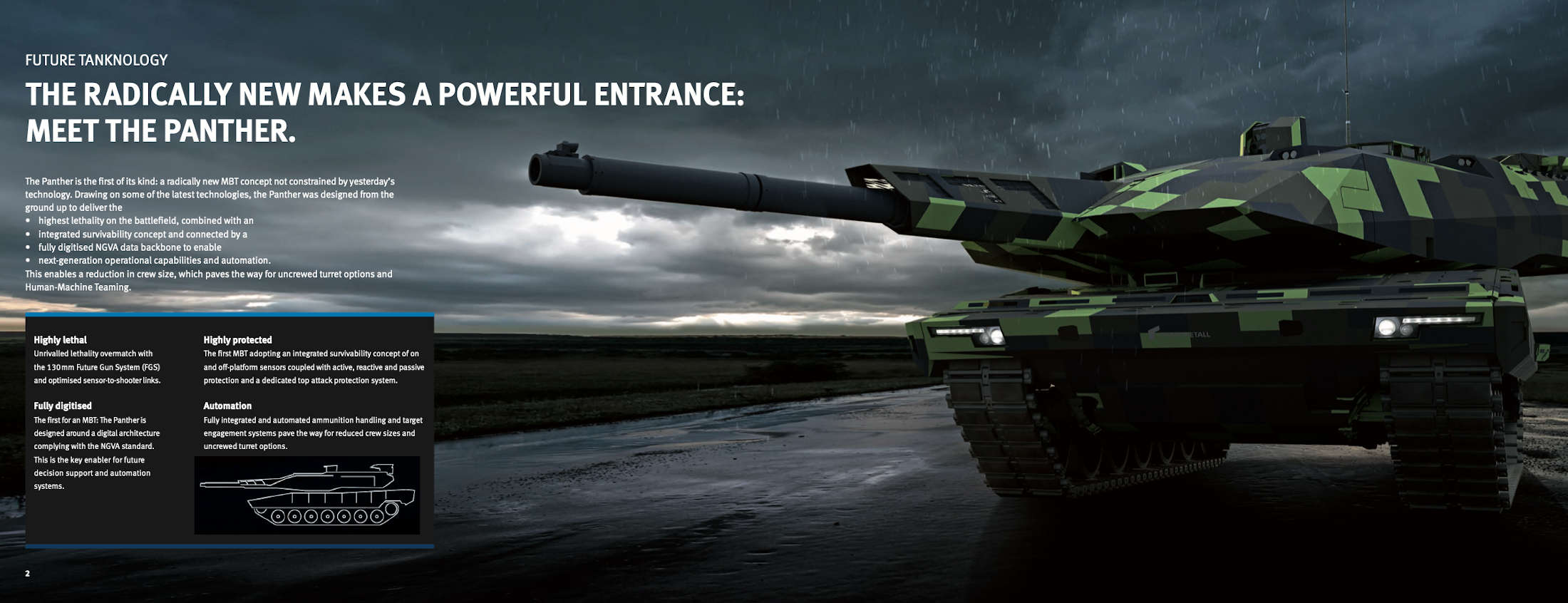In the image
Two 'Leopard' 2A4 during exercices by the Norwegian Army [US DoD].
The War in Ukraine brought the tank back into the spotlight of modern warfare. Conflicts in the Middle East and the annexation of Crimea had led many to put the focus on unconventional warfare and grey zone tactics. In addition, it sent shockwaves throughout the European defense apparatus, with the EU's nascent security tools slowly moving to respond to the new challenges. One of their major realizions was the need to acquire an adequate number of capable MBTs to defend themselves. Furthermore, the EU countries realized the need to unify their efforts to create a capable defense industry. As a consequence, Europe has initiated efforts to unify the defense market by reducing the number of different MBT models, which complicated military cooperation.
The question remains, however... Will Europe manage to create a standard MBT, or will the project end in failure? What challenges will Europe face at the technological and political level? The article will analyze the current situation of European MBTs, the process being carried out to create a common MBT, and the challenges it will face. It will conclude by summarizing the findings of the investigation.
Current Situation
Europe has traditionally been the focus of the development of armored warfare since its inception in World War I, peaking during World War II. Some of the most iconic tanks in history were created with the focus on a major war in Europe or influenced by combat experiences in the continent. The current composition of armored vehicles of Europe is no different; finding their roots in a Cold War era focused on a possible war between NATO and the Warsaw Pact.
Within NATO, the inventory of MBTs is hardly homogeneous. It includes leftover tanks of the old Soviet Block in limited service with the militaries of the former Warsaw Pact or Yugoslavia and old American and French models to a lesser extent. For example, Poland and Croatia operate the Russian T-72 together with a limited number of domestically produced models of this MBT like the PT-91 "Twardy" and the Yugoslavian M-84. In fact, Poland is the country with the most diverse collection of tanks in service; besides the T-72-both in the Soviet and the Polish versions-, the country also has in service an assortment of MBTs produced in different countries like the US M-1 "Abrams", the south Korean K- 2 "Black Panther", or the German "Leopard" 2 in different versions.
Some Western European nations like Britain, France, and Italy have created their own tank models and operate, respectively, the "Challenger" 2/3, the " Leclerc", and the "Ariete" MBTs. Meanwhile, countries like Greece and Portugal continue to field American vintage tanks like the M-48 "Patton" and the M-60.
The most common tank in use by European nations, however, is the German built "Leopard" 2, used not only by Germany, but also by countries like Hungary, Spain-which manufactures it under license-, Austria, Norway, Sweden, and other NATO and EU members. The "Leopard" is currently considered as one of the best tanks in the world, alongside the British "Challenger" 2 and the US M-1 A2 "Abrams". Currently, its producer, Rheinmetall, is developing a new MBT, the "Panther" KF51, based on the chassis of its predecessor, the "Leopard" 2.
This diversity of armored vehicles has become a contentious issue, as Europe, and especially NATO seek to achieve some level of standardization of the many militaries of the Alliance. The co-existence of multiple models complicates the interoperability of European militaries not sharing the same type of MBT, and hobbles the possibility of potential customers benefitting from the economy of scale that a limited number of MBTs would enable.
NATO is not the only one concerned with Russia; with the establishment of a common European Defense Fund and the CSDP, the EU took on a more military approach. The limitations in defense in Europe alarmed the leaders of both organizations, as they awoke to the reality of their severe shortcomings in this field after decades of neglect in budgets.
NATO attempted to mitigate the problem by increasing interoperability through the harmonization of the ammunition used by its members, while renewing calls to reach the minimum 2% of GDP in defense spending the Alliance demands of its members since the Wales Summit in 2014. The EU, for its part, focused on launching standardization programs under the European Defence Agency (EDA). These efforts, however, proved to be only stopgaps, as Europe failed to catch up to Moscow's capabilities despite concerns from U.S. presidents for the European allies to increase defense spending in light of the changing geopolitical landscape in the continent as in the Indo-Pacific, where, especially Russia and China, respectively, emerged as systemic rivals of the Alliance.
Many of the above mentioned vehicles have seen some degree of combat with the Ukrainian military as part of the military aid to the West lent Kyiv in response to the 2022 invasion. This has created a new challenge for NATO, since the presence of such powerful tanks in the theater not only increases tensions with Russia, but also increases risks of the tanks and their strengths and weakness being compromised to a hostile actor.
Rather than developing new tank models, European defense authorities focused on improving their already existing ones, with the modernization of the "Leopard" 2, the "Leclerc", and the "Ariete" being the focus, in an approach similar to that of the US after failure to create a replacement for the M-1 "Abrams". However, the idea of developing a new generation of MBTs was also considered. Advances in technology have marked major revolutions in tank warfare, including the use of drones, together with concerns over the use of AI in warfare, that have increased the urgency of the need of a new-generation MBT and the systems necessary to maintain them.
Furthermore, Western aid to Ukraine has created another problem that spurs innovation; as the war continues and more military hardware keeps being sent to the frontline, the number of tanks and weapons fielded by NATO decreases, reducing the Alliance's defensive capabilities. This not only includes tanks in storage but also weapons in active service of NATO members, alongside the ammunition that can be used by the allies. In addition, tanks like the "Abrams", which dominated the battlefield in the 1990s and early 2000s are starting to show their weakness and old age in battlefields when facing more modern enemies like the tanks and anti-tank weapons being used in Ukraine by the Russian military.
A common MBT
The current strategic environment, and the reinvigorated support of most European states to a common security has created a new opportunity to further increase the interoperability of the EU militaries. Evidence of the renewed importance of the tank in this endeavor is Ukrainian President Zelensky's requests through 2023 and 2024 for "Leopard" tanks and offensive weapons, and the heavy tank losses in the war. Furthermore, Eurosatory 2022 and 2024 have shown a renewed interest in MBTs as KNDS and Rheinmetall's prototype tanks were the protagonists of the exhibition. Weapons and systems used in tanks were also a highlight, with more powerful cannons.
There are several projects within the EU to move forward in the development of a single European MBT. The most significant ones are the "Main Armored Tank of Europe" (MARTE), and the "Technologies for a Future MBT" (FMBTech), both projects being founded by the EDF since 2024. The former program is led by the MARTE ARGE GbR consortium that brings together German, Italian, Sweed, Estonian, Lithuanian, Spanish, Belgian, Norwegian, Greek, Romanian, Finnish, and Dutch companies to create a new MBT platform that integrates innovative and disruptive technologies to counter current and future threats.
The latter's aims is to enable existing and future European MBTs to achieve the highest possible operational and combat effectiveness. The project will aim to define specific innovative technologies for an MBT system. The main emphasis of the project will be digital capabilities, including interactions with robotic systems, and the integration of AI. Although, not a member of MARTE, France participates in the FMBTech program.
In parallel to MARTE, France and Germany had launched in 2017 the Main Ground Combat System (MGCS) with the objective of replacing their current MBTs. On April 2024, both countries formalized talks to jointly develop a Main Battle Tank (MBT) to replace the "Leopard" 2 and "Leclerc " MBTs by 2040. The project falls in line under proposals by EU members in regard to the EDA and CSDP's concern of Russia, reignited after the annexation of Crimea and intensified after the 2022 invasion. It was close to being scrapped after rumors that Germany was considering abandoning it to join Sweden, Italy, and Spain in a different project.
Germany's Rheinmetall "Panther" KF51 is considered by some defense analysts as the first step or at least a testing ground to the MGCS and a future European MBT. It is clear from the design of the "Panther", that the "Leopard" 2 will play a key role in its development, from which it has been greatly influenced. France and Germany, two of Europe's largest industries, have shown consensus after almost ten years of negotiations to finally decide to build a common MBT, and are the architects of the program.
A fourth project is also in development in Europe. In October 2024, Italy's Leonardo agreed with Rheinmetall to cooperate in developing a new MBT, separated from the two aforementioned programs. The move has been hailed as a major step, since it involves two of the strongest defense companies in Europe. The goal of the program is for Rheinmetall to provide "Panther" KF51s to the Italian Army to replace their "Ariete" tanks. Furthermore, other Italian companies have also agreed to contribute to the program.
Outside of the EU, the United kingdom unveiled the "Challenger" 3 as a replacement to its vaunted "Challenger" 2. The "Challenger" 3, which is being jointly developed between the UK's BAE and Germany's Rheinmetall, benefits from being an upgraded version of the "Challenger" 2.


